What is the forget, borrow and learn framework?
Establishing major innovations within the borders of a large corporation
is one of the most complex and important challenges for management. A new
business (NewCo) with high growth potential rarely coexists harmoniously with
established Business Units (CoreCo). Often, innovation managers face considerable
head winds, when they move strategic experiments out of the incubator into
execution. The Forget, Borrow and Learn challenges from Vijay Govindarajan
and Chris Trimble are helpful in dealing with these headwinds. The framework
was first introduced in the article "Building Breakthrough Business Within
Established Organizations" in the HBR of May 2005. When the model of Govindarajan
and Trimble is applied well, the emphasis in innovation can be shifted to
organizational excellence. In this way the organization is becoming less dependent
on excellent leadership.
According to Govindarajan and Trimble, NewCo must forget
some of what made CoreCo successful, because NewCo and CoreCo have elemental
differences. Furthermore, NewCo must borrow some assets of CoreCo.
This is the biggest advantage NewCO has over independent competitors. Finally,
NewCo must be prepared to learn some things from the beginning.
It is important to notice that the three challenges are complex.
- They are present throughout NewCo's lifecycle.
- They are present all at once.
- They are related.
- They can be at odds.
- They need to be balanced.
Origin of the forget, borrow and learn theory. History
The HBR article by Professor Govindarajan and Professor Trimble was adapted
from their forthcoming book "Ten Rules for Strategic Innovators - from Idea
to Execution".
Usage of the forget, borrow and learn method. Applications
- Guidance on how strategic innovation should be organized within large
firms.
- Decreasing dependence on leadership skills in innovation processes.
Principles of the Forget Borrow Learn framework. Elements
- How to Forget?
- Don't be isolated (insular). Hire outsiders in key management roles
for NewCo and strongly consider an outsider to head the business. Outsiders
challenge institutional memory and are instrumental in building new competencies.
- Don't assign status based on size. NewCo should report at least one
level above CoreCo in order to reduce the pressures on NewCo for short-term
results and to ensure that CoreCo does not hoard resources.
- Rearrange the moving parts. NewCo should reconsider how major business
functions such as marketing and product development interact. Established
patterns of interaction within CoreCo are usually incompatible with the
new business model.
- Build a new dashboard. The company should not base NewCo's performance
on CoreCo's metrics. Doing this reinforces CoreCo's formula for success,
not NewCo's.
- Dare to make complex judgments. The company should not judge the performance
of NewCo's leader too heavily against plans.
- Promote new thinking about success. NewCo's leader should create a
unique set of beliefs about actions that will cause success. And he should
regularly reinforce this set of beliefs. CoreCo's beliefs may not apply
in NewCo's environment.
- How to Borrow?
- Balance the yin of forgetting with the yang of borrowing. Only create
links to lend NewCo a crucial competitive advantage. Avoid links where
conflicts are severe. Avoid links to the IT or Human Resources departments.
- Find common ground. Reinforce values that NewCo and CoreCo share.
In most cases, CoreCo will have some values that are inconsistent with
NewCo's business model. Still, the senior management team can facilitate
cooperation by creating a "metaculture" composed of more general values.
- Be careful what you ask for. To promote collaboration, reconsider
individual targets. Evaluate and reward the managers of CoreCo, in part,
according to their willingness to cooperate with NewCo. Avoid strong incentives
tied strictly to CoreCo's short-term performance.
- Co-opt CoreCo. To eliminate resistance from CoreCo's general manager,
make borrowing as painless as possible so that he can focus strictly on
CoreCo. Replenish CoreCo's resources when NewCo borrows heavily. Set transfer
prices high enough to ensure that CoreCo will consider it a priority to
help NewCo but not so high that NewCo cannot realistically achieve profitability.
NewCo's profitability is a powerful symbol. CoreCo will always be more
enthusiastic about helping when there is evidence that NewCo is succeeding.
- Be alert to problems. Assign a senior executive to anticipate tensions
between NewCo and CoreCo and to intervene should those tensions become
destructive. The senior executive must be willing to spend a lot of time
and energy and must be influential and respected within the corporation.
She must continually explain the rationale for the differences between
NewCo and CoreCo.
- How to Learn?
- Don't try to mix oil with water. Hold separate meetings for evaluating
the business performance of NewCo and CoreCo. These meetings must be handled
very differently, and combining them can be impractical, if not destructive.
- Protect predictions. Ensure that executives involved in NewCo's planning
process understand the importance of improving predictions and are aware
of how this learning process can go astray when predictions are ignored,
are manipulated, or become rigid.
- Avoid being defensive. Evaluate the leader of NewCo not on results
but on his ability to learn and make good decisions. Though accountability
to plans is an effective practice in mature businesses, it can be crippling
in new high-potential businesses. If NewCo's leader is held accountable
to the business plan, he will become defensive once targets are missed.
A highly likely outcome in any strategic experiment. It will be difficult
for him to be open and candid. He may even hide information, perhaps even
taking the senior management team out of the learning process altogether.
- Perform less, faster. Simplify the plans. But plan more often. Each
cycle through the planning process creates an opportunity to learn, therefore
more frequent planning increases the speed of learning. To make a higher
frequency practical, plans must be simplified. Detailed plans (broken
down by region, product line, sales channel, and so forth) are useful
for mature businesses, but NewCo should focus on resolving critical unknowns,
which can be accomplished at a more aggregate level.
- Analyze through a new lens. Compare predicted and actual trends. Because
strategic experiments are dynamic, the pace of changes is often more valuable
information than current results.
- You should measure what you don't know. Identify metrics that are
most useful in resolving critical unknowns. These are usually nonfinancial
measures and are rarely the most closely monitored metrics at CoreCo.
Strengths of the Forget, Borrow and Learn method. Benefits
- Framework provides advice on a very difficult and important challenge
within large firms.
- Helps innovation in organizations, which will result in stimulation
of the economy.
- Provides guidance on how strategic innovation should be organized within
large firms.
- The framework decreases resistance in organizations.
- It helps to decrease dependence on leadership skills in innovation processes.
There is shortage of such skills.
Limitations of the forget, borrow and learn theory. Disadvantages
- Even when this framework is used to its full capacity, the problem it
was designed for will likely remain.
- The framework helps to decrease, but not to end the need for strong
leadership in innovation.
- The three challenges are sometimes at odds, they are interrelated and
they must be balanced.
Assumptions of the forget, borrow and learn framework. Conditions
- Strategic experiments constitute the highest-risk, highest-return category
of innovation and require a unique managerial approach.
- A new business with high growth potential rarely coexists harmoniously
with established Business Units.
- Through improving the capabilities of the organization surrounding the
innovation leader, his work can be made easier.
Book: Govindarajan,
Trimble - Ten Rules for Strategic Innovators - from Idea to Execution
|
Forum discussions about Corporate Innovation Management.

|
How to Run Major Innovation Experiments
To achieve major, strategic innovations in an organization, having brilliant ideas is not enough. You also need to run experiments to test the ideas. The experimentation should aim to answer just one ...
 15  4 comments |

|
Do You Want an Innovative Organizational Culture?
In any organization, the formation of an innovative culture depends on its leaders. Their words and actions are crucial:
"In our company we are encouraged to openly share our thoughts. If these tho...
 6 |

|
What is Innovation? Definitions
It might be useful to define what is meant by innovation. I like Schumpeter’s trilogy of: invention, innovation and diffusion, hence I tend to read articles in this context, (cognitive abstract) of in...
 2  2 comments |
|
|
|
Courses about Corporate Innovation Management.
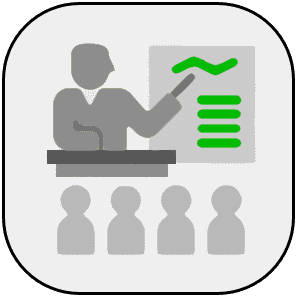
Beginners Course
|
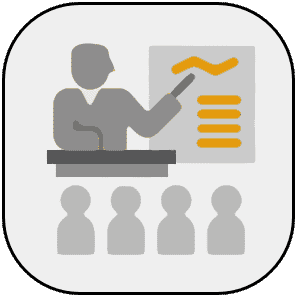
Advanced Course
|
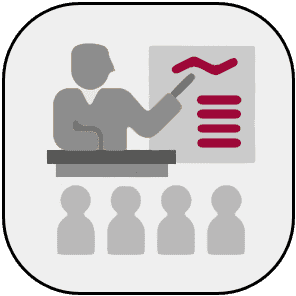
Course for Experts
|
|
|
|
The best, top-rated topics about Corporate Innovation Management. Here you will find the most valuable ideas and practical suggestions.
|
🥇
|
Types and Levels of Innovation Leaders
Each phase in leading and structuring an innovative firm has its own challenges. From founding an entrepreneurial firm to leading a start-up to managing the firm through its various growth phases.
...
 32  12 comments
|
|
|
|
Advanced insights about Corporate Innovation Management. Here you will find professional advices by experts.
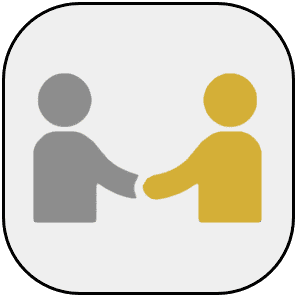
Consultancy Tips
|
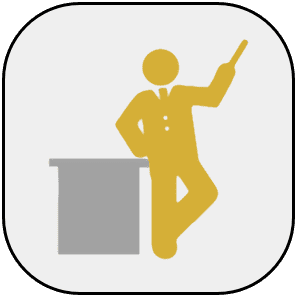
Teaching Tips
|
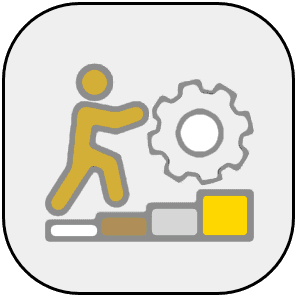
Practical Implementation Tips
|
|
|
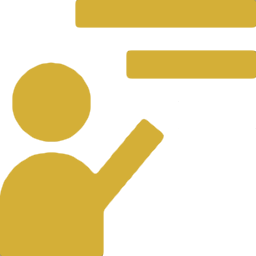
|
Innovation Pitfalls Avoiding Innovation Traps
Harvard Professor R. Moss Kanter describes 4 common innovation mistakes and corresponding remedies (HBR Nov 2006):
1. S...
|

|
Benefits of Outsourcing Innovation Improving Innovation Performance
Michael A. Stanko, Jonathan D. Bohlmann and Roger J. Calantone (“Outsourcing Innovation”, Executive Adviser, November 20...
|

|
Recent Innovation Trends | New Innovation Types Open innovation, User Innovation, Value Innovation, Bottom-up Innovation
Roland Bel (2012) outlines and explains four types of innovations that have become more and more important since the las...
|

|
Implementing Organizational Innovation Excellence in your Organization Strategic Innovation, Best Practices
In their article “Achieving breakthrough growth: From idea to execution” (Ivey Business Journal, January/February 2006),...
|

|
When Should a Firm Consider to Outsource Innovation? Outsourcing Best Practices, Innovation
According to Michael A. Stanko, Jonathan D. Bohlmann and Roger J. Calantone in the article “Outsourcing Innovation” (Exe...
|

|
Innovating Under the Radar Avoiding 5 Obstacles to Major Innovation
If somewhere below in a large corporation an innovator has a very bright, daring, promising but for some perhaps also th...
|

|
Key Behaviors of Innovative Organizations Innovation Management, Culture Change, Organizational Change, Innovative Culture, Organizational Culture
Many large-scale attempts to make organizations more innovative are experiencing organizational inertia, barriers and/or...
|

|
How Culture Levels Explain Failures in Organizational Learning and Innovation Improving Organizational Learning, Organizational Innovation, Changing Organization Cultures
Schein (as cited by Bertagni et al., 2010) tries to elaborate on the question why organizational innovations often fail ...
|

|
Unfreezing, Moving, Freezing Change Management
Don't mix up 'Forget Borrow Learn' with: 'Unfreezing, Moving, Refreezing'
In the early 20th century, psychologist Kurt ...
|

|
What Makes a Company Innovative? Innovation Best Practices, R&D Best Practices, Corporate Innovation
A futurethink 2006 Innovation Tracker Survey mentions:
- Ability to create a climate that continuously fosters innovat...
|

|
How to Design Experiments to Support Decision-making on Strategic Innovations Strategic Innovation, Strategic Decision-making, Strategic Experimenting, Experiments, Strategic Testing, Innovation Tes
The probability of success of a major innovation is difficult to assess. Statistics and other datasets only provide info...
|

|
How to Lead an Innovation Team Best Practices, Innovation Team Management
In order to become a great innovation team leader, Ram Charan suggests in the article "P&G's Innovation Culture" (strate...
|

|
Creating Organizations to Produce Breakthrough Innovations Best Practices, Critical Factors, Creating an Organization to lead Radical Innovation
Since 50 years, the Pentagon’s Defense Advanced Research Projects Agency (DARPA) has been very successful in producing a...
|

|
The Role of Diversity in Personal Traits on Innovation and Innovativeness Innovation, Increasing Organizational Innovativeness
New research by Hewlett, Marshall and Sherbin proves that diversity (of personal and team traits) drives innovation and ...
|

|
Three Critical Capabilities in Developing a Strategic Corporate Innovation Competence (Disruptive) Innovation Competence, Strategic Innovation Capability, Corporate Strategy, Innovation Leadership
Skarzynski and Rufat-Latre (2011) discovered that the successes of disruptive innovators are driven by 3 critical capabi...
|

|
A Closer Look at How Change and Innovation Decisions are Made Decision-making on Organizational Change, Innovation Decision-making, Contingent, Participative Decision-making
Kim, T (2015) elaborates on decision making on "non-routines" or innovations. According to him, non-routines can be seen...
|
|
|
|
Various sources of information regarding Corporate Innovation Management. Here you will find powerpoints, videos, news, etc. to use in your own lectures and workshops.

|
Definition, Differences and Relationships between Resources, Capabilities, Competencies and Core Competencies Core Competencies
Javidan (1998) has made a great contribution to answering the question for the relationship / differences between resour...
|

|
Innovation and Knowledge Management The Importance of Innovation and Knowledge Management
Authors: Dr. Siddhan and Dr. Abdul Halam
A presentation in which the importance of Knowledge Management and Innovation ...
|

|
How to Manage Creativity in Organizations Innovation Management, Managing Creativity, Managing Creative People, Fostering Creativity in Organizations, Creativity
This presentation elaborates on the management of creativity in organizations, and includes the following sections:
1. ...
|

|
Introduction to Managing Creativity and Innovation Innovation Management, Managing Innovation, Managing Innovative Employees, Managing Creative Employees
Presentation about Innovation and Creativity, thereby mainly focusing on creativity in organizations. The presentation i...
|
|
|
|
Useful tools regarding Corporate Innovation Management.

News
|

Videos
|

Presentations
|
| |

Books
|

Academic
|

More
|
|
|
|
Compare with the Forget Borrow Learn approach:
Stage-Gate |
Business Process Reengineering |
Kaizen |
Change Iceberg
| Change Model Beckhard
|
Changing
Organization Cultures |
Levels of Culture
| Change Phases |
Appreciative Inquiry
| Positive Deviance
| RACI |
Disruptive Innovation
| Trajectories
of Industry Change |
Blue Ocean Strategy
| Core Competence |
ADL Matrix
Return to Management Hub: Change & Organization | Leadership
| Program & Project Management
| Strategy & Innovation
More Management Methods, Models and Theory
|
|
|













